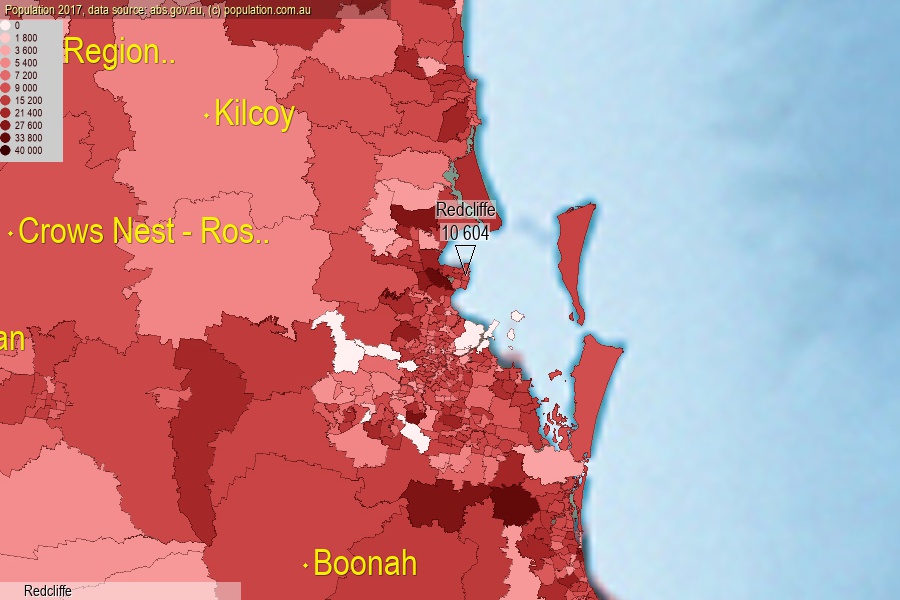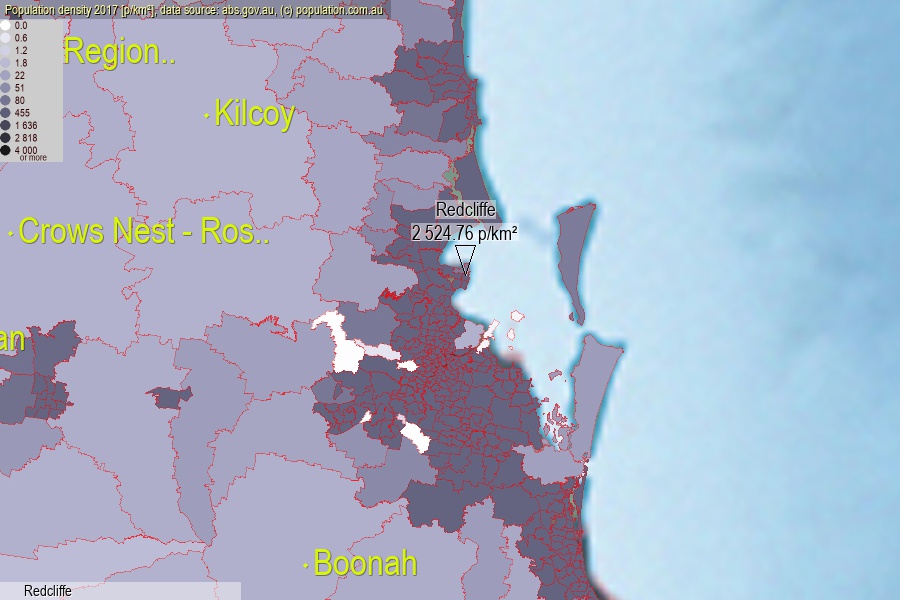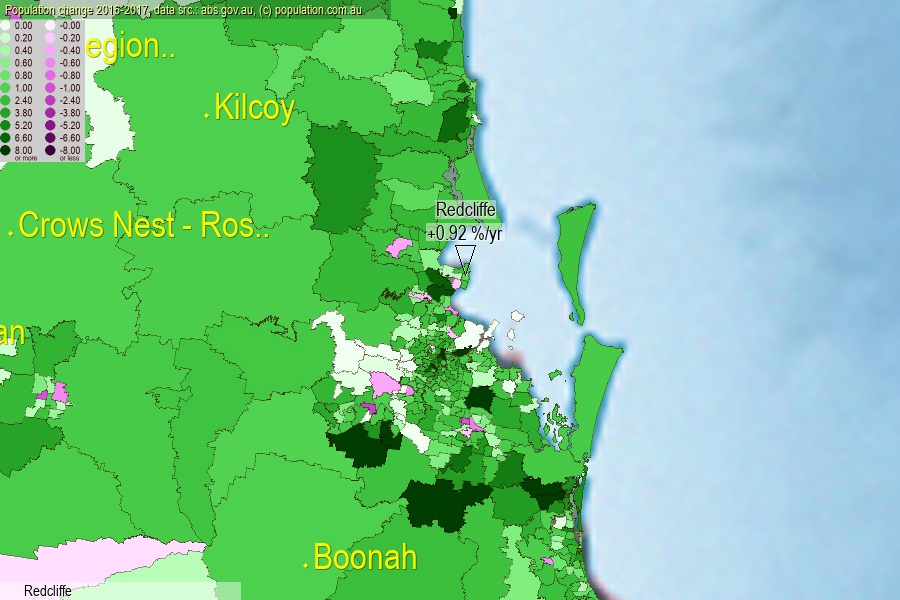 population.com.au
population.com.auLast official estimated population of Redcliffe (as Statistical Area Level 2) was 10 604 people (on 2017-06-30)[2]. This was 0.04% of total Australian population and 0.212% of QLD population. Area of Redcliffe is 4.20 km², in this year population density was 2 524.76 p/km² . If population growth rate would be same as in period 2016-2017 (+0.92%/yr), Redcliffe population in 2025 would be 11 413. [0]



Click to enlarge. Redcliffe is located in the center of the images.
Population [people], population density [p./km²] and population change [%/year] [2]
View borders » (new window) [4]
[1991-1992] -1.02 %/Yr.
[1992-1993] -1.73 %/Yr.
[1993-1994] -1.77 %/Yr.
[1994-1995] -1.65 %/Yr.
[1995-1996] -0.43 %/Yr.
[1996-1997] -1.17 %/Yr.
[1997-1998] -1.80 %/Yr.
[1998-1999] -0.24 %/Yr.
[1999-2000] -1.10 %/Yr.
[2000-2001] +0.59 %/Yr.
[2001-2002] +2.39 %/Yr.
[2002-2003] +1.95 %/Yr.
[2003-2004] +1.39 %/Yr.
[2004-2005] +2.16 %/Yr.
[2005-2006] +1.00 %/Yr.
[2006-2007] +0.79 %/Yr.
[2007-2008] -0.35 %/Yr.
[2008-2009] +0.96 %/Yr.
[2009-2010] +0.79 %/Yr.
[2010-2011] +2.64 %/Yr.
[2011-2012] +3.70 %/Yr.
[2012-2013] +2.29 %/Yr.
[2013-2014] +2.08 %/Yr.
[2014-2015] +0.37 %/Yr.
[2015-2016] +2.32 %/Yr.
[2016-2017] +0.92 %/Yr.
[0] Calculated with linear interpolation from officially estimated population
[1] Read more about SA2 and Australian Statistical Geography Standard (ASGS) on abs.gov.au
[2] Population data from Australian Bureau of Statistics (Population and density: 2017; change: 2016-2017)
[3] Digital Boundaries: Australian Statistical Geography Standard (ASGS) 2016.
[4] Border coordinates are simplifyed using Ramer-Douglas-Peucker algorithm.